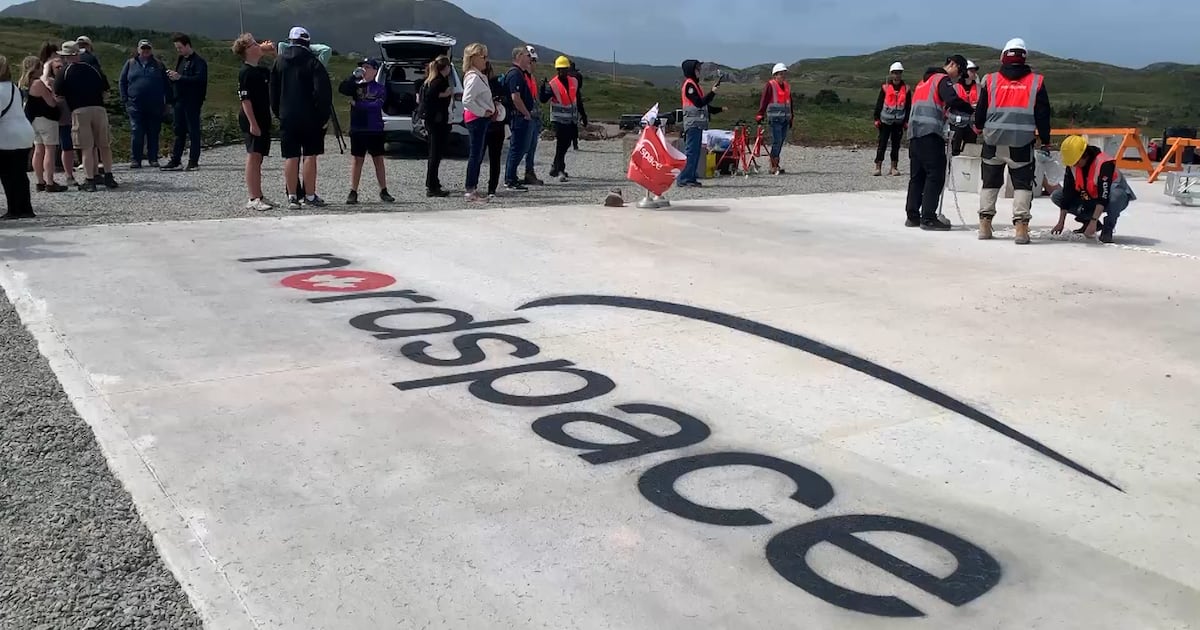Technology
Federal Investment Fuels Atlantic Canada’s Space Industry Growth

The Canadian federal government is taking significant steps to enhance its burgeoning commercial space sector with a commitment of nearly $200 million over the next three years. Announced in the November budget presented by Prime Minister Mark Carney, this funding aims to establish a sovereign space launch capability as part of a broader Defence Industrial Strategy (DIS). Industry insiders view this investment as a pivotal moment that underscores the government’s focus on the space industry.
Rahul Goel, CEO of NordSpace, emphasized the importance of this budget allocation, stating, “To see it be called out so specifically in the Canadian budget is a huge vote of confidence.” Both NordSpace and competitor Maritime Launch Services are actively developing spaceports—launch facilities for rockets—in Atlantic Canada. NordSpace is constructing its infrastructure in St. Lawrence, Newfoundland and Labrador, while Maritime Launch Services is setting up near Canso, Nova Scotia.
The proposed federal spending translates to approximately $60 million per year, a level of budgetary support for launch operations that has never been seen in Canada. Steve Matier, CEO of Maritime Launch Services, expressed enthusiasm, noting, “We’re thrilled to see it.”
While federal officials have not yet outlined specific plans for the allocation of these funds, there is an expectation that Ottawa aims to have a functional spaceport operational and firing rockets by 2028. Goel remarked that this timeline represents “record speed” for Canadian companies.
Both Goel and Matier anticipate that the funding will be distributed among multiple companies, fostering competition within the sector and attracting private investment. Goel clarified that the $60 million annual budget is significant but may not be sufficient to fully sustain multiple enterprises. “Maybe not even two,” he noted, highlighting that the intent is to use this funding as a catalyst for further private capital.
Maritime Launch Services envisions an airport-like model for its operations, providing launch services to clients with their own rockets and payloads, akin to how airlines operate. Matier explained, “You want to have a launch client, like Air Canada or WestJet, where you’re providing these services to them. Instead of baggage handling, it’s satellite handling.”
The company is currently collaborating with T-Minus Engineering, a Netherlands-based rocket manufacturer, on a sub-orbital launch from the Nova Scotia spaceport scheduled for as early as November 18. This rocket is intended to reach the Kármán Line, an internationally recognized boundary between Earth and space, located approximately 100 kilometers above sea level.
Despite the optimistic outlook, creating made-in-Canada rockets capable of deeper space missions presents a greater challenge than establishing launch pads. Matier emphasized that developing these launchers is a complex and costly endeavor. He predicts that much of the federal funds will be directed toward assisting companies in overcoming these launcher development hurdles.
In addition to its launch pad in St. Lawrence, NordSpace is also focused on developing its own rockets and satellites. Goel expressed a commitment to maximizing job creation and value within Canada. Despite facing setbacks, including scrubbing several launch attempts in August and September, Goel noted that valuable lessons were learned, bringing the company closer to its objectives. “We’re a 100 percent Canadian-owned company, so hopefully that bodes well for us,” he stated. “We’re in the ready position.”
The Canadian government’s investment marks a critical juncture in the nation’s space ambitions, suggesting a bright future for the commercial space sector in Atlantic Canada. As the industry evolves, the collaboration between government and private entities will be essential in navigating the complexities of space exploration and commercialization.
-

 Politics1 week ago
Politics1 week agoSecwepemc First Nation Seeks Aboriginal Title Over Kamloops Area
-

 World4 months ago
World4 months agoScientists Unearth Ancient Antarctic Ice to Unlock Climate Secrets
-

 Entertainment4 months ago
Entertainment4 months agoTrump and McCormick to Announce $70 Billion Energy Investments
-

 Lifestyle4 months ago
Lifestyle4 months agoTransLink Launches Food Truck Program to Boost Revenue in Vancouver
-

 Science4 months ago
Science4 months agoFour Astronauts Return to Earth After International Space Station Mission
-

 Technology3 months ago
Technology3 months agoApple Notes Enhances Functionality with Markdown Support in macOS 26
-

 Top Stories1 month ago
Top Stories1 month agoUrgent Update: Fatal Crash on Highway 99 Claims Life of Pitt Meadows Man
-

 Sports4 months ago
Sports4 months agoSearch Underway for Missing Hunter Amid Hokkaido Bear Emergency
-

 Politics3 months ago
Politics3 months agoUkrainian Tennis Star Elina Svitolina Faces Death Threats Online
-

 Politics4 months ago
Politics4 months agoCarney Engages First Nations Leaders at Development Law Summit
-

 Technology4 months ago
Technology4 months agoFrosthaven Launches Early Access on July 31, 2025
-

 Top Stories3 weeks ago
Top Stories3 weeks agoFamily Remembers Beverley Rowbotham 25 Years After Murder





















